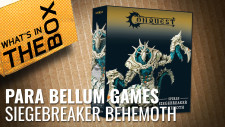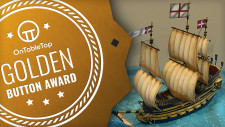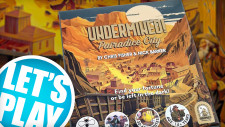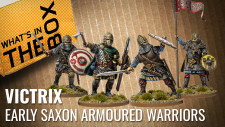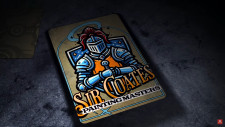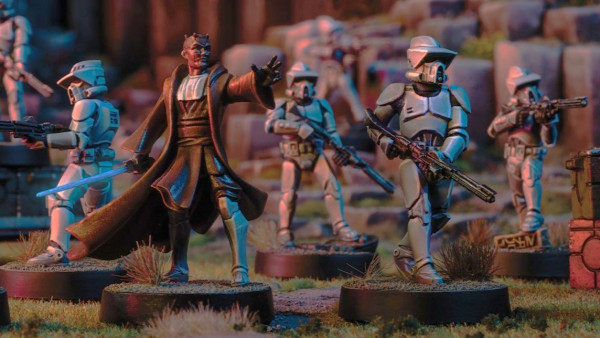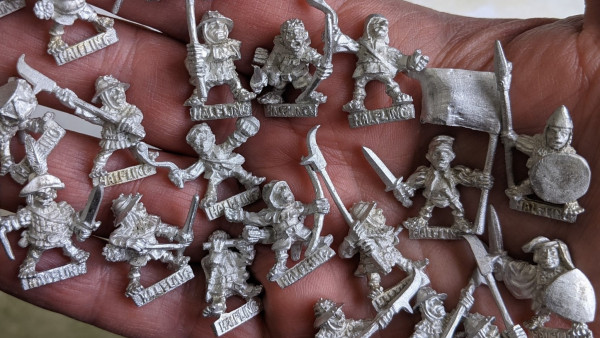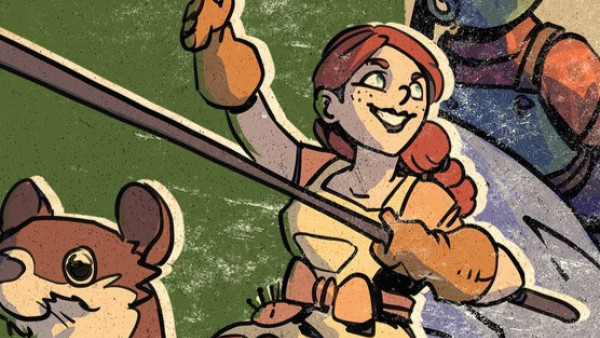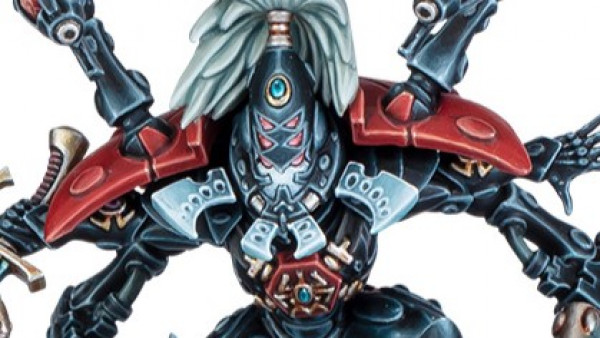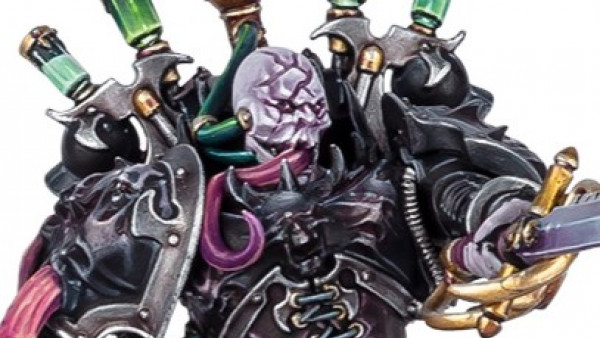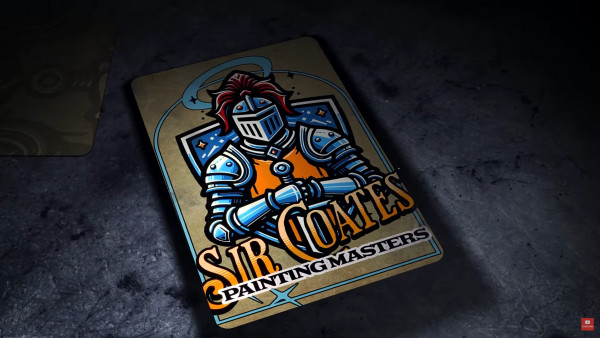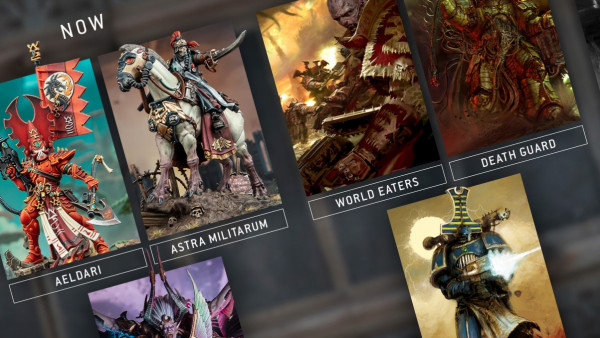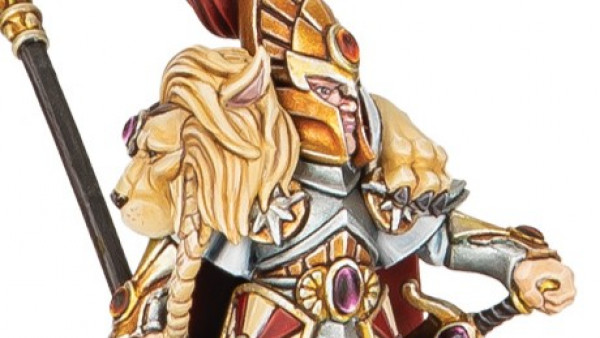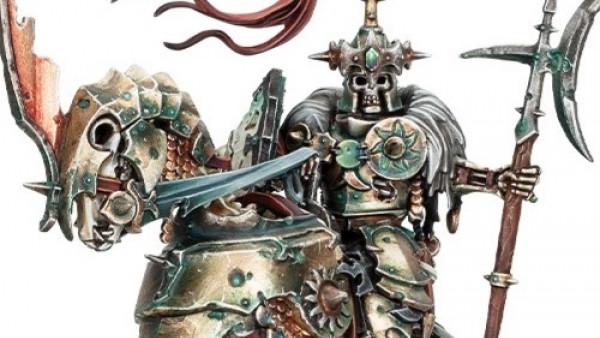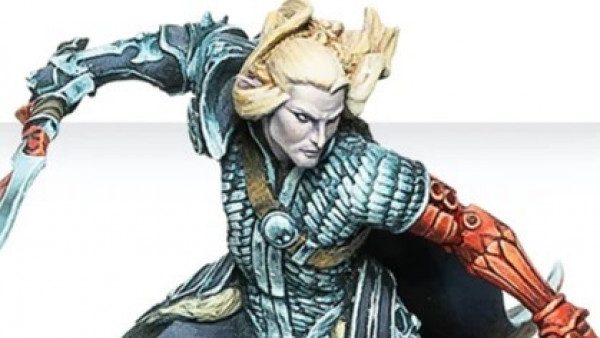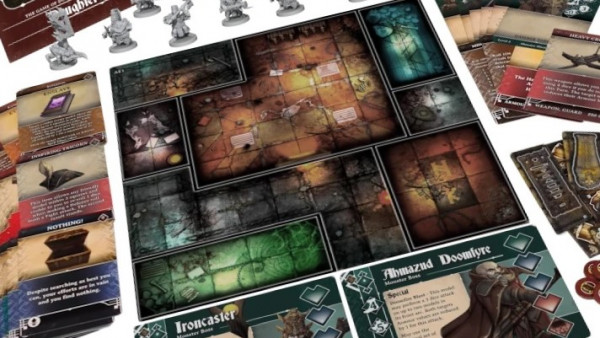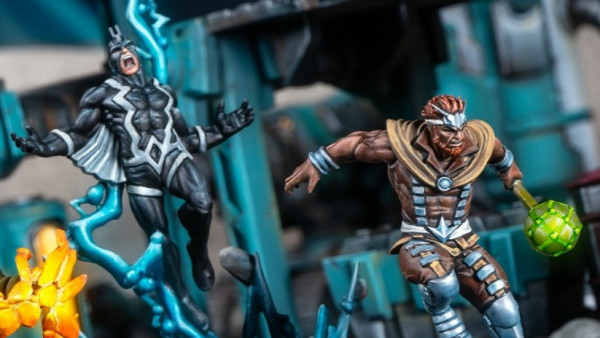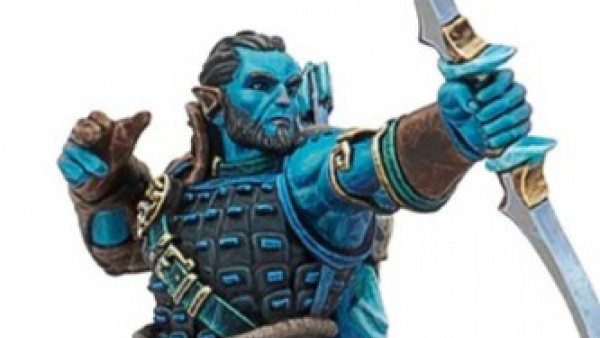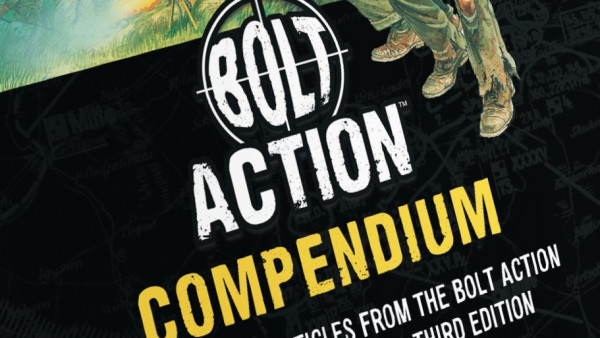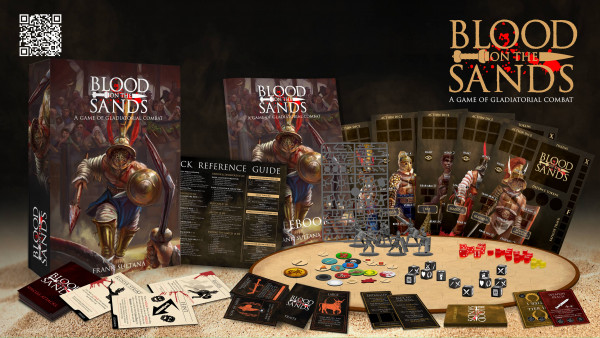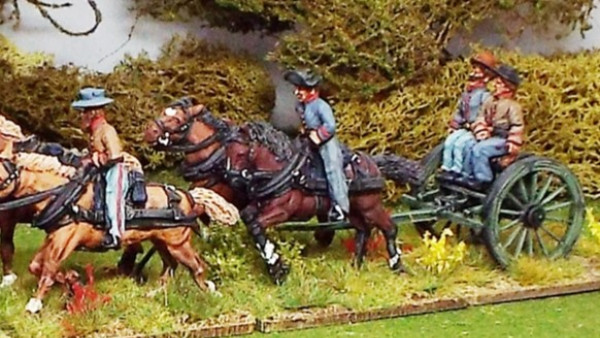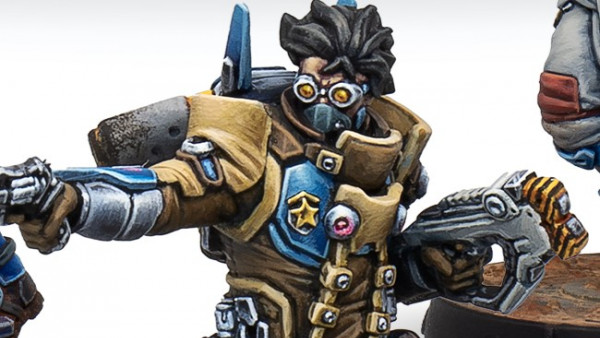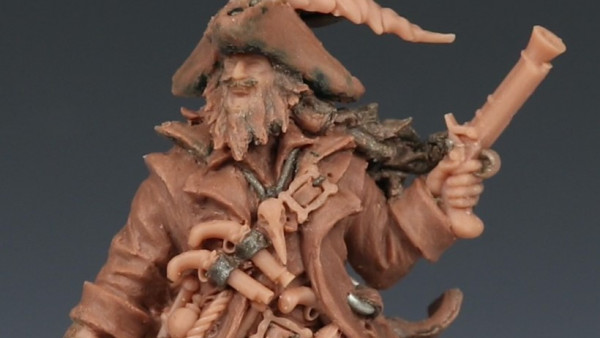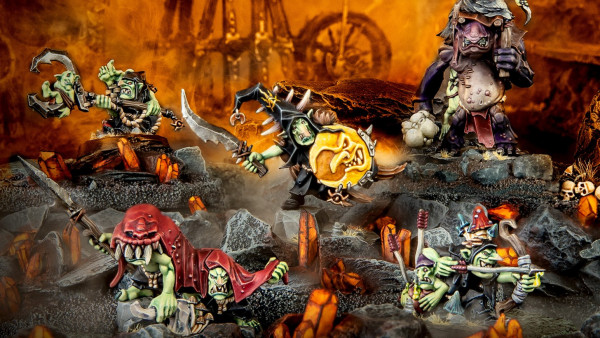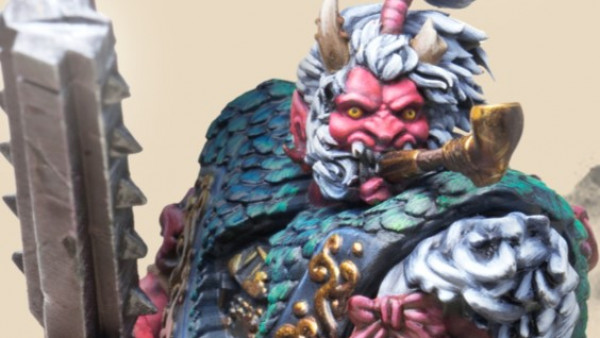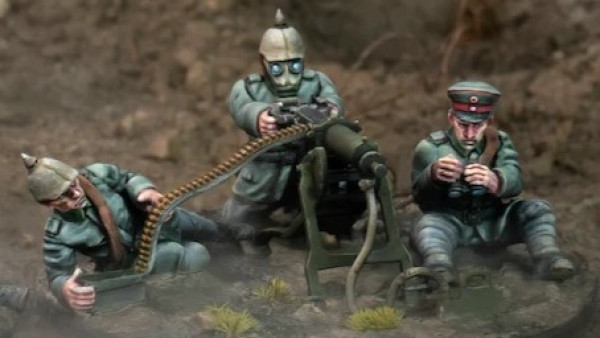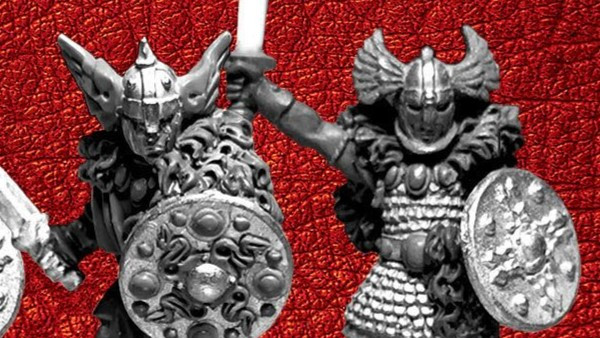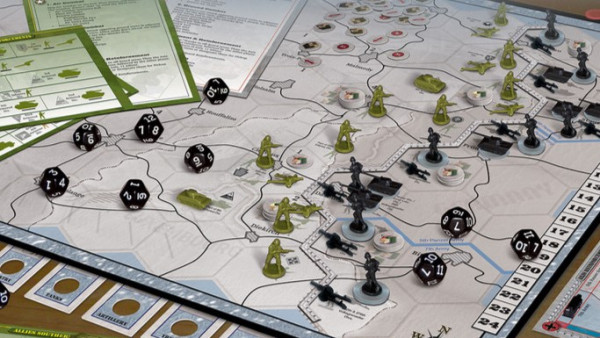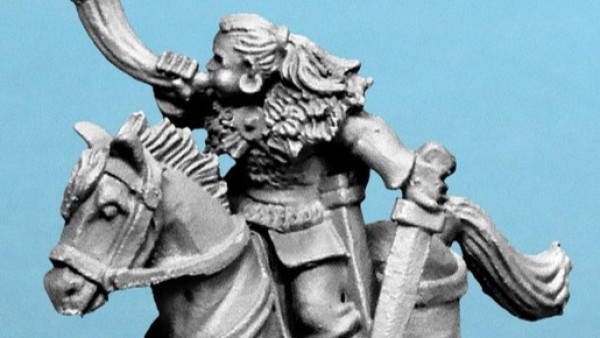Home › Forums › Historical Tabletop Game Discussions › Continued Explorations of Normandy Wargaming
Related Games:
Tagged: historical, Normandy, Oriskany
This topic contains 59 replies, has 6 voices, and was last updated by jamesevans140 5 years, 6 months ago.
-
AuthorPosts
-
July 9, 2019 at 5:08 am #1412694
@oriskany thanks for the reply.
That’s what I like about this sector is that it does not follow the norm of STuGs being the norm. As they say there its always an exception to the rule and here it is.
About a month after the landings a British operations command ship about cruiser size is believed to have been destroyed by a German air to surface guided missile similar to the one used to destroy the Roma after the Italian surrender.
I had a feeling that the tanks arriving on Omaha would have such a cascading effect, but not to this level.
I have notice you have posted the battle report. I look forward to reading it a bit later and bringing to @timp764‘s attention. It may help him with his must have list for WinterCon.
I have a bit of a love hate relationship with the Firefly. When it was in a mixed troop of tanks the Firefly is holding the Cromwells back. I prefer to use the speed of the Cromwells but are often put at risk keeping formation with the Firefly. The Cromwells are up to the job on getting through the side armour of most of the German tanks with exception of the Tiger and King Tigers. It is with these exceptions I start appreciate the Firefly.
July 9, 2019 at 1:02 pm #1412900Yeah @jamesevans140 this is almost the same reason I went ahead and made the counters so @damon could have that choice one way or the other. The “correct” way gives him x24 of the exact same unit, 10-A-8 mixed Sherman troops. While the firepower ratings average out fine, the counter can only have one range value so the Firefly’s enhanced range more or less “vanishes” when mixed with the Shermans. Limitation of the system … (yes, even Panzer Leader is not perfect). 🙂
This way the game is a little more interesting -x18 Sherman troops and x6 Firefly troops – and the Fireflies get the full range and bonuses therein.
But again, made up the counters both ways so Damon, as “brigade commander” could make the choice. 🙂
July 9, 2019 at 1:22 pm #1412913Moar guns am better!!
It was an enjoyable game, have to admit to a bit of ‘Tiger Fear’ early on and some poor deployment; units too far apart for mutual support. But figuring out how to defeat the big cats was satisfying, even though I got very lucky with some really poor scores for the German shooting that should have cost me at least a company of tanks but only resulted in a few dispersal’s that I was able to rally off and then carry on.
Chasing the Tigers out into the open and them murder-killing them from every direction did give me a nice warm feeling…
July 9, 2019 at 4:48 pm #1413008It looked like a great game @damon.
My motto,
The more guns that actually work the better.
Never kick I tiger in the face, you might make it angry.
It is about this time they started using heavy artillery to deal with the tigers. The only issue was the German counter battery was extremely effective so forward deployed artillery preferred that the big guns in the rear dealt with them.
There was a US 155mm battery that prided itself in taking no more than 60 seconds to get shells on target when dealing with Tigers.
July 9, 2019 at 5:05 pm #1413013@oriskany I think it makes it more realistic anyway. Most tanks prefer not to reveal themselves too soon. At long range they tended to fire APCBC rounds as at this stage of the the APDS round developed accuracy issues at 500m. When firing the APCBC round the 17 pounder was really no different to a US 76.2mm firing APCBC rounds. As wargames we tend to look only at the gun rather than the munitions.
So yeah I think it was a good call to do it that way.
I don’t thick we would like the perfect wargame rules. I think it is the little bugs in the system that endears them to us or unless we had something to complain about we would not be happy.
Anyway great game guys and I will be letting @timp764 know about it so he can see the British in a large scale engagement.
July 9, 2019 at 5:11 pm #1413016July 9, 2019 at 6:12 pm #1413019Glad you liked it, @damon – It was fun playing a two-sided enemy, the cagey, cautious Lehr and the 12th SS “HoJo’s Hellions.” The one platoon of JgPz IV/48s and the handful of Tigers in SS sPzAbtg 101 added a little spice to the dish.
Yeah, there were two really bad rolls for the Germans that really should have cost the British a little more. I think the outcome would have been the same, but by my count you still had 14 troops left out of a starting strength of 24, plus all three M-10 Achilles batteries of 55th AT Rgt.
So just should have cost a little more. But no worries. We’ll say those Tiger crews were still a little tipsy after all that champagne celebrating Wittmann’s “victory” at Villers Bocage.
By the way, I was incorrect, Damon. Looks like Wittmann was still alive after all. Apparently he doesn’t die until August 8. Well, except you probably killed him in this game! 😀 Alternate history! 😀
Totally agree on the artillery, @jamesevans140 – I’ve read German accounts where they didn’t fear the Typhoon or the Thunderbolt nearly as much as the little L4 or L5 spotter plane – that was sure sign they were in for DAYS of artillery fire.
But don’t worry about kicking THESE Tigers in the teeth – apparently they are all recruits form the “Waffen Wall-Eyed” brigade. 🙁
I would add, however, that Panzer Leader does take the ammo differences into account, specifically the AF of 14 for an Easy Eight platoon of FIVE TANKS – while the 17 pounder gets a 14 for a troop of FOUR.
Gotta go for now … at the airport.
July 10, 2019 at 4:18 am #1413093Okay, I’ve met up with @dignity and @avernos and gotten to the hotel at Historicon, so now I can give a better answer.
@piers – I would be interested in base numbers of AFVs killed by Tigers in “Normamdy.” 😀 I would imagine the number would be actually quite small, given naval gunfire, air superiority, and small numbers of Tigers deployed and available.
Okay, let’s talk about the guns. Most Panzer Leader players are happy to “trust” the game.
Other madmen want to deconstruct the math and see how the game really ticks.
“Base” Shermans:
A US Sherman platoon has an AF of 11, range 8. This is five Shermans. A UK Sherman troop gets a 9. Some people point out that the game is “biased” for the Americans, until they’re reminded that the UK troop has only four tanks (each Sherman is worth 2.2, x4 = 8.8, round to 9).
Of course UK troops tended to have a Firefly. 17-pounders get a 16 in a 5-gun battery (figure 3.2 per Firefly). So three Shermans = (2.2 x 3) + (1 x 3.2) = 9.8, round to 10. This explains the 10-A-8 values for “traditional historical” UK tank troops.
Again, we broke these squadrons into three all-base Sherman troops and one all-Firefly troop.
One may note that the 17-pounder AT TOWED guns have a 14 even though there are 5 guns in a battery, while the 5-vehicle batteries of M-10 Achilles with the same 17 pounder gets a 16.
So the same gun gets basically three different values? (4 guns = 14, 5 guns = 14, 5 guns = 16???)
Yes. Towed guns or fixed guns (assault guns, fixed-mount tank destroyers, etc) get a -1 or -2 for their lack of traversing turret. They engage targets a little more slowly as the whole vehicle has to swing to the next target.
Meanwhile the 17-pounder in the M-10 Achilles gets the full 16 because it is in a traversing turret and the game unit represents 5 vehicles (5 x 3.2 = 16).
Meanwhile, “Base” Shermans get the “A*” weapons class … so they don’t have to divide against soft targets the way “A” class does (like the 17 pounder). This represents dual class nature of the base 75mm, including HE-FRAG and WP ammo.
Speaking of ammo, this is the reason they give the Easy Eight’s gun a slightly lower “A” class AF than the Firefly’s 17 pounder, although both guns were ROUGHLY similar from what I read … ) a relative lack of the very best ammunition for the 76.2mm M1A1 (?) gun somewhat degraded its real-life battlefield performance.
Hence weapons like the American Easy Eight get the 14 AF, but that’s only because of a four-tank platoon.
I noticed Battlegroup also gives the American 76.2 and even 90mm very bad AP scores. One of the very few, and very small things I don’t really like about the game. I acknowledge they should be lower than the 17 pounder because of the aforementioned ammunition manufacturing and supply problems, but I feel they overdid it a smidge.
But hey, any game system that gives the Panther a better tank-killing number than a Tiger I has passed the Oriskany test.
Posts might be scarce over the next few days …
July 12, 2019 at 7:03 pm #1413998Great reply @oriskany.
For the must part I completely agree with how the PL system derives the values for the game from the tangibles. However just like every other system out there it is the intangibles that are hard to put into the game system as every other person will believe what they are and how and by how much they should impact the game and by how much. US infantry platoons in Normandy went to great efforts to ensure that they had more than the standard issue number of BARs. As there was no stock-take done so we have no real guides to just how widespread it was and by how many? How were they used ? More towards aimed fire or was it spray and prey?. No one will agree to how much the platoon attack value be raised. In all likelihood the German player may not wish to see any change at all.
Nerves and shock of a green unit in combat for the first time is another condition that is hard to fairly work out. Some do ok and others not. An extreme example happens in the Winter War. The 5th Infantry Division made up of fresh green troops were being moved up to the front line. A tank turret pops up from behind a ridge line in front of them pointing towards them. Someone yells Russian tanks and the entire division panics and routes. It took the officers almost 10 miles to pull the division up and restore order. Most embarrassing tank turret belonged to an Armoured Car that belonged to the Finns and was returning from patrol. No one expected this. Yet in a weeks time a Russian company of tanks would not phase these young men.
Politics back home caused some trouble for the US in Europe that had some impact that reflects on the stats in many games. The 90mm was an awesome weapon that had its hands tied behind its back as the US only shipped solid shot as the only AT round for it. Things get compounded at around 400M for the solid shot. At this distance it bounced off the front armour of a Hetzer fairly reliably. At longer or shorter ranges it would reliably penetrate the little Hetzer. This problem of German sloped armour was known to the US from experience from the 76.2 gun. The issue was corrected by the APC round and later by the APCBC round.
Yet no such round was shipped to Europe for the 90mm until late May 1945. So many gaming systems write down the 90mm based on this issue, however not all German armour was sloped and not all sloped armored tanks parked 400M from the 90mm. Some feel this is realistic because of this issue, while I am not convinced by the argument.
The 76.2mm actually did have a round that rivaled the 17 pounder and was accurate at long range. It was called hyper-shot. It could reliably penetrate the front of a Panther at any range, as range did not diminish its penetration ability. So you would think the army would issue this round in numbers. The problem was that it did not belong to the army. Until the end of the war US Cavalry was a completely separate arm in the US armed forces. It was their job to destroy tanks, not the army’s and it was the cavalry’s round.
It was issued to the TD units equipped with either the M18 or 76.2 AT guns. Now by the time of the running battles in the Lorraine that crews of 76mm M4 Sherman tanks found out about this round. So when they went to a supply dump they would seek out this round and borrow as many of these rounds they could find for safe keeping. Politics does not stop in war, it goes into overdrive. Given this I have no problems in giving some 76mm M4s and all M18s the same stats as the 17 pounder. It would be fair for any army list that has both the M18 and 76mm M4 in it to raise the stats of the M4. Hyper-shot was standard issue for the M18.
Time after time in the battles of the Lorraine the 75mm M4’s was on the losing end of a unit of Panthers when some M18s would turn up. Resulting in either smoking Panthers or Panthers running away. To be fare the crews of the Panthers were very green. They were taught that the Panther was stronger than the Tiger from the front, yet the Americans had something that could turn their front armour into Swiss cheese. The US 3rd Army in the Lorraine had already given up their M10s for M18s. Some were given to the French but most had been sent State side to be upgraded to M36s.
Tracking down exactly what a Hyper-shot round is had proven difficult. As range does not effect penetration ability, I am assuming it is a HEAT round. Reliably penetrating the front armour of a Panther says it is at least as good as a 17 pounder.
You guys have a great time at the games convention, I have to wait until the 20th for WinterCon.
I too will not be online either for the next few days as the Hex System arrived today. 🙂
July 16, 2019 at 4:50 pm #1415329Apologies for the late reply, @jamesevans140 – As you know I was balls-deep in Historicon, 83 pieces of content, 1200+ comments and growing! Exhausting but fun.
I know what you mean about the fogginess of intangibles in unit design. PB/PL and especially AIW have always struggled with this. Michael Benninghoff’s Finland counters he designed were absurdly powerful, as in they exceeded 1973 Egyptian platoons twice their size, with AKs, PKMs, RPKs, and RPGs … Byron Henderson redesigned them at 30% Benninghoff’s values … and people raged. But he applied math, without axes to grind or personal bias. Needless to say, I use Henderson’s figures (especially since I recruited him to BoW community)! Soviet units are too weak (all designed as if in 1941, but they have those values through 1945). Arab tank units in AIW are even worse. The excuse given is the quality of the crews, but then they slap the new morale system on top of that and of course give them the lowest morale rating. So I feel like they’ve been “charged twice” for admittedly lower vehicle crew quality. Anyway … I agree it’s an issue in any game, even good ones.
Yeah, unit experience is a weird factor. Novice units are often “better” in a weird, ironic way. They don’t KNOW what’s waiting for them, they’re eager and fresh. Veteran units get “war weary.” Men can only take so much, and while vets are solid, they are admittedly closer to that threshold of “ENOUGH” than the new guys.
The 90mm was an awesome weapon that had its hands tied behind its back as the US only shipped solid shot as the only AT round for it. – YES, this is what I was trying to get across with other folks regarding the quality of some of these guns. Why most games give the US 90mm poorer AT values than 17 pounders (i.e., why the 17 pounder replaces the 90mm in the M10 tank destroyer, making it an “Achilles.” In Panzer Leader, a platoon of Easy Eights (76.2mm gun) gets the same value as a troop of Fireflies, but that’s only because the Easy Eights are a platoon of five and the Fireflies come in a troop of four (when not mixed with three Shermans, as was the norm). Again, ammo shortfalls and delays.
Time after time in the battles of the Lorraine the 75mm M4’s was on the losing end of a unit of Panthers when some M18s would turn up. Resulting in either smoking Panthers or Panthers running away. Another issue in these particular battles was the terrible training these brand new Panther brigades had. These kids were rushed to the front with barely an idea what was happening. PL scenarios published for these Arracourt battles give you piles of awesome Panthers, but in understrength Wehrmacht platoons and with Morale “C.” Heartbreaking! 😀
Keep in touch! 😀
JIM
July 17, 2019 at 11:47 am #1415515Thanks for keeping in touch @oriskany. Glad to here you had a great time at Historicon. Why is having fun so tiring.
I will be at WinterCon this weekend and paying for it later. At the moment I am knee deep in 4″ hexes.
Maths are good for modelling many things but it does have its limits. Consider a program created to predict the results of horse racing. It can historically look at each horse with its wins and losses. At what distances the horses wins have been run and the surfaces, along with wet and dry conditions. What it can’t predict is that the horse has stomach pains on the day of the race. Even if the program tries it has no historical data for the given horse in pain. So this becomes an indefinable variable. But this is life.
The Winter War is a good example of these intangibles. Some troops are well trained professionals that for the most part have not seen combat and the rest are trained but green. Most officers have seen at least two wars while the generals have seen three. Most in the army have grown up in a Finnish version of the boy scouts. In summer they focus on orienteering and target shooting while in winter it is cross country skiing and target shooting. So nearly all Finns are at home on skis and are well above average shots at all distances and many choosing to take their own sporting rifle with them. These rifles were the same as the Russian Rifle with the tolerances tightened up for much better accuracy. Finally in the second half of the Winter War the Finns were running low on ammunition of all types. Finland started the war with 90 days maximum reserves. We have to remove the legend factor. Not every US marine was 10′ tall and ate nails for breakfast. Now we have the Russians who changed their doctrine during the war and heavily outnumbered the Finns. Most of the Russians involved had not seen snow before and had a fear of the primeval forests preferring the open with without cover. The early doctrine had units organised on the 1888 Prussian field manual, the same one that the nations go into WW1 with. Further Russian doctrine calls for them to advance until contact and dig-in. The line would be reinforced while artillery was brought up to destroy the resistance. The second doctrine makes contact but does not dig-in. Instead the front is divided into five zones. Left flank, left wing, centre, right wing and right flank. Think of these as conveyer belts. As the enemy does something tactically better the Russians simply feed companies into the appropriate conveyer belt in answer with all platoons moving straight forward. While the first doctrine was in use the Finns were offering resistance and after the second doctrine was introduced the end came quickly. I don’t think the doctrine charge alone was the winning factor as all Finnish troops are fully experienced at war now. Most of the above cannot be easily given a number. So for games like PL I think it is a brave person who gives only one set of stats for the Russian and Finnish units for the Winter War. At the minimum you actually need desperate stats for early and late Winter War, then you would be standing on safer ground.
I have issues with the 17 and 6 pounder in wargaming as in the rules what they are referring to is the APDS round and not the gun. This is not helped by historians regurgitating war time propaganda about it that was trying to diffuse 88 envy. The APDS as used was not fin stabilised and tended to be inaccurate at ranges above 600m, so crews of the AT guns would not risk giving away their positions using this round preferring to use APCBC instead. The other issue is which one. From the Western Desert to just after D-Day the APDS round used a high strength steel perpetrator while after D-Day a tungsten perpetrator was used and finally just prior to the end of the war in Europe an improved version of the round was introduced with even greater penetration power and more long range inaccuracy. In the interim FoW Late War v4 rules used the last version of the round requiring us to use the v3 stats for the Firefly for use in D-Day. So among all this confusion rule writers tend to give the poor old 90mm gets. Given the practices used at the time at any range above 600m the 90mm should have a penetration value higher than any 17 pounder. At long range to 90mm round will not bounce off sloped armour either.
So speaking in the widest possible terms here my take would be at short range they may have been effectively similar but at long range it is superior to the 17 pounder. At long range it is rivaling the bite of a King Tiger’s 88mm. Perhaps it would be better to look at the bite of a M46 although it uses the 2nd generation of the 90mm it would have values of the APCBC round and nudging the figures down a bit to get a feel of where the 90mm should have sat in the US had shipped it with an appropriate round. The fact that they did not to me says they believed it to be power enough.
Yes there is a lot to groan about the action in the Lorraine. It was the largest tank on tank battle for the US and it was the only time when Panthers outnumbered Pz-4 tanks in the field. It had the makings of one of the greatest battles of WW2 for wargamers and then fell apart. People also only talk about the Panzer brigades and often not talk about the rebuilt Panzer divisions that were there as well. Generally they were rebuilt to 4 Panthers to the platoon.
July 18, 2019 at 6:26 pm #1415835I am knee deep in 4″ hexes. – Sounds great! That’s my kind of gaming. Not only hexes, but big hexes, on a big board, so there’s plenty of elbow room for minis / counters / tokens. I think this was one of several failings of that part of the industry in the 80s and 90s, for physical publishing reasons the hexes were barely bigger than whatever was supposed to go in them, so the boards became very fiddly in high-density areas.
Maths are good for modelling many things but it does have its limits.
I both agree and disagree with this. I mean, obviously, everything anywhere has “limits.” But without math, and analysis, and statistical review, all a game is left with is “color.” Gut feeling. Preconceptions of how something “should” be. The “rule of cool.” All of which I absolutely cannot stand. I acknowledge it’s part of the “cost of doing business” in wargaming, but that’s always where a game starts to lose me. I think a big part of that is “where the dice are” in the game, if that make any sense. The “dice” represent where the game design “gives up” in terms of design, fidelity, and granularity of statistical resolution. Nothing on a battlefield, or the universe, is random. We live in a cosmology governed by mathematics. Of course (and this is where I agree), any game has limits vis-à-vis the detail to which the factors are actually represented and modeled. This is often “where the dice are” – where the game shrugs and says “I dunno, chuck a dice and see what happens.”
So when I’m looking at a game, I want to see where the dice are in the rule set, and the structure of the turn sequence. I can usually tell ion about 3 minutes whether a game is for me. For 95% of candidates, you can probably guess the answer. 😀
So I agree that math has its limits in a wargaming context. I just don’t know if we should “accept” that, and not always be striving for better fidelity, “resolution of detail,” and removal of chance from a system … and incorporating higher degrees of the qualities in designs that are smooth, fast, and engaging. It’s challenging, and it will never be perfect, but that’s what makes game design fun.
Anyway, now that I’m back from Historicon, I won’t be on OTT / BoW that much going forward. The SItrep Podcast channel is back from summer hiatus, and most of my time will be there. If you’re not subscribed on YouTube or PodBean or Twitch or any of our other channels, consider giving us a look. We have quite a bit in the works for the coming weeks.
https://www.youtube.com/channel/UCrsewixu9dXUIMTQKJYPuEQ
JIM
July 19, 2019 at 5:58 am #1415932Thanks for the great and openly honest reply @oriskany.
I think what you are trying to describe to me is what I know as the logic engine. If constructed correctly it can try to compensate irrational (something that logic and or maths cannot deal with) object. It can be assigned to a family tree and via inheritance take on characteristics from other objects in the tree. I think we get this from object orientated programming. If this fails then fuzzy logic algorithms can be applied, but to be honest this has a way to go before I would use it in confidence.
Interesting thought about maths controlling the universe. My personal take is that maths (tries to) describes the universe in a predictable manner, but I think we are coming from the same direction.
The other issue is that just how complicated the rules would be or unnecessarily lengthening playing time. Although I am not part of it there is a trend for games being completed in under an hour, played in a lunch break. Although I admit a fondness for Steve Jackson’s Ogre.
So to me all wargame rule systems start out with the intent of real world simulation but by time of publication it has had to go through quite a number of compromises for the market, sadly.
I liked the hexes of the games of the late 60s and early 70s as most had roomy hexes. By the late 70s you had games like SPI’s Middle-Earth where stacking could be six high in the hex but the corners of the playing pieces stuck out past the hex boarder. On the Gondor-Mordor boarder you had a mountain of playing pieces that if bumped you spent the next hour sorting the mess out.
Yep I have over 300 ordinary 4″ hexes, overt 100 specialty hexes and about a dozen multiple hex prices. Under these are placed base boards with special pins that are 15″ x 12″ that are joined by clips placing the boards about 2″ apart. The hexes have the corners removed so that they plug into the pins. It comes with hexes that will raise a hex placed upon it by 1/2 an inch. You get foam hexes you can carve to make smooth contours. Out of the box you can layer up by three layers, but you can go high than this with a bit of extra modelling. The pins are designed so that rivers, trenches, roads and the like are actually sunken up to 1/4″. Most flat terrain hexes can be double sided. We are currently creating dessert on one side and Eastern Front winter on the other.
A bonus is that in FoW most movement rates and weapon ranges are evenly divisible by 4.
I will check out that link and subscribe to see what you have been working on later tonight.
I have WinterCon tomorrow and the day after so I am about to get even busier. A couple of the sellers are bringing some new toys for me to play with.
😀
July 19, 2019 at 12:20 pm #1416085@jamesevans140 – Actually, I like your description a lot better. “Described by” is much better than “controlled by” or “governed by.”
By the late 70s you had games like SPI’s Middle-Earth where stacking could be six high in the hex but the corners of the playing pieces stuck out past the hex border. – Yeah, that’s annoying.
Your board sounds amazing. You’ll have to take some photos of it!
Have fun at Wintercon! I have a helluva weekend ahead of me, between Sitrep Podcast recording, Darkstar games with players in the US and UK, and an AirWar C21 game (air combat over North Vietnam) against a player in Australia – and also getting our AC fixed! It’ll be a busy one to be sure!
July 21, 2019 at 12:00 pm #1416569Thanks @oriskany. I had a truly great time at WinterCon, but I am already started paying for it.
Yesterday we had our first group play of U-Boot. Yarrick and I have read much about submarines in WW2 but we take the view that the other players should learn the hard way. So we make them the captain. The lesson of the day was the AA 2 cm was for shooting at small boats not aircraft. We got the alert from the observers of approaching aircraft. Yarrick and I advised a drive. The captain ordered man the AA. Final result we trashed a good Type VIIC. Lights out in the crew section and a chewed up diesel engine that became a fire in the engine room. One shot up boat. The group has decided that we should drive in future. But it was amazing watching the others come down with first person video game syndrome. They could not let go of the chance to do shooty things expecting to blow the aircraft up. They understand this is a simulation not a shooty game. However they had so much fun they are coming around Wednesday afternoon to have as many games as we can fit in. Perhaps we will get on to linked games and finally on to the campaigns. You start in 1940 and move on from there.
Middle Earth was a great game but it was in the box that got lost in the move along with the Normandy mega game and others. It was an interesting game within a game. The first looked after the characters and their interplay. The next part was the game that involved the units of the different armies. Both games could be played separately or together which was the best. Characters added bonuses to army stacks. If characters were attacked by army units it was more about capture and evasion.
The new board has generated a lot of interest among the greater group that were quickly talking about sci-fi and fantasy builds of it. This board however will be built for historic 15/25mm gaming.
Amongst everything else going on I have assembled one panel and painted up by plain hexes for a general desert, sandy comes later. I have been using several Tamiya textured paints and wet blending them on the hexes.
Once a have several panels up and painted I will send you some photos. With a little sadness once we have made the hexes for a European hex board we will be retiring the battle boards after almost 25 years of great gaming on them. In their next life they will be used by the guys at the warehouse.
I don’t expect that non days and gaming day will occupy my time until Thursday or Friday. So it looks like we will both be tied up this week in our own way.
I had my view of maths drilled into me by my year 11 and 12 physics teacher on one side. He was an American with a total passion for physics. On the other was Walter Cunningham, the Apollo astronaut. He was visiting Canberra when a was a small boy. My mother was had chef at the motel he stayed in. I used to build models in the recreation room while I waited for her to finish work. So he saw this boy building a model of a LEM and started talking to me. What ever I did to impress him, he went to the kitchen and asked my mother permission to write to me. After he returned to NASA he sent me lots of photos and we stayed in touch until he left NASA. They did not seen to pass on my letters to him or give me an address. I was devastated when I found out that at the time Australians were not eligible for the space program. However Walter nudged me to computers and I would have loved to let him know how that kid turned out. I have been thinking about him a lot over this weekend with great fondness. I am amazed how a brief encounter in a recreation room of a motel and a passionate physics teach has shaped a life.
-
AuthorPosts
You must be logged in to reply to this topic.





























